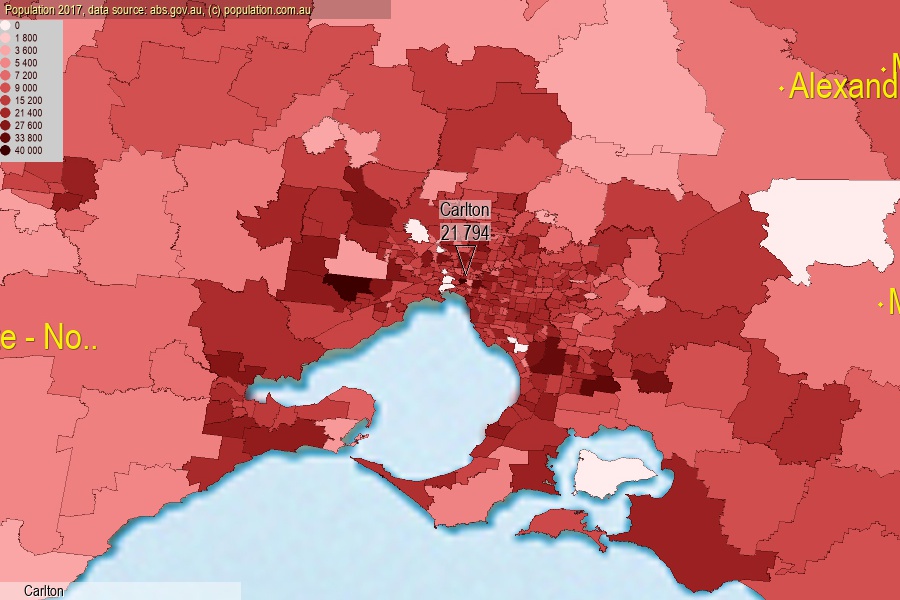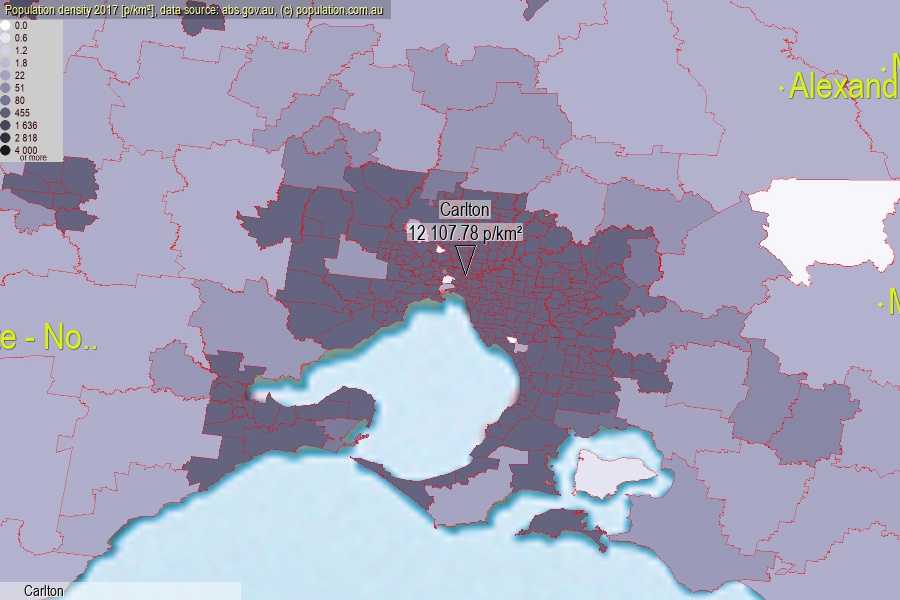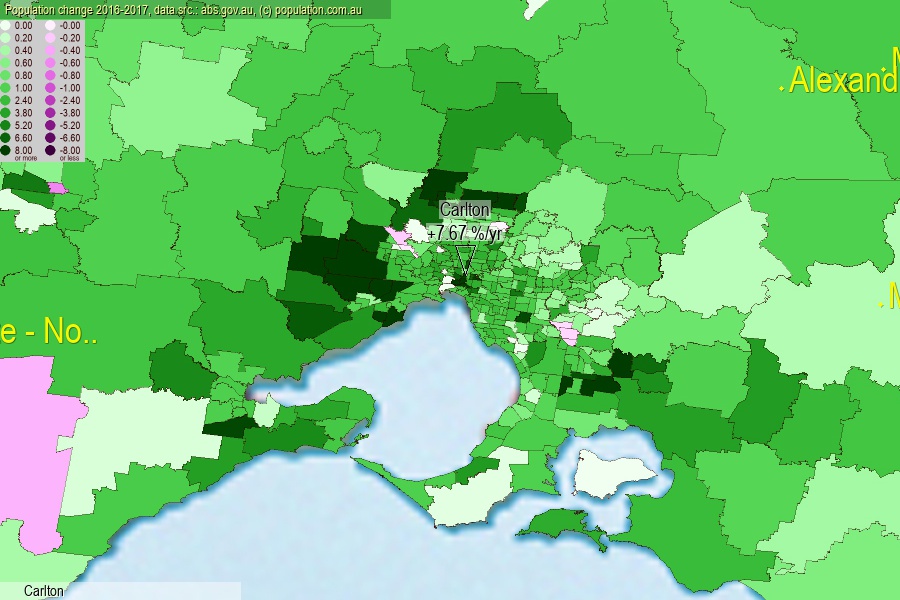 population.com.au
population.com.auLast official estimated population of Carlton (as Statistical Area Level 2) was 21 794 people (on 2017-06-30)[2]. This was 0.09% of total Australian population and 0.339% of VIC population. Area of Carlton is 1.80 km², in this year population density was 12 107.78 p/km² . If population growth rate would be same as in period 2016-2017 (+7.67%/yr), Carlton population in 2025 would be 39 355. [0]



Click to enlarge. Carlton is located in the center of the images.
Population [people], population density [p./km²] and population change [%/year] [2]
View borders » (new window) [4]
[1991-1992] +1.06 %/Yr.
[1992-1993] +2.04 %/Yr.
[1993-1994] +2.32 %/Yr.
[1994-1995] +2.92 %/Yr.
[1995-1996] +4.24 %/Yr.
[1996-1997] +0.63 %/Yr.
[1997-1998] +0.92 %/Yr.
[1998-1999] +1.97 %/Yr.
[1999-2000] +3.44 %/Yr.
[2000-2001] +1.83 %/Yr.
[2001-2002] +5.17 %/Yr.
[2002-2003] +5.88 %/Yr.
[2003-2004] +5.78 %/Yr.
[2004-2005] +6.24 %/Yr.
[2005-2006] +6.82 %/Yr.
[2006-2007] +6.06 %/Yr.
[2007-2008] +4.62 %/Yr.
[2008-2009] +3.92 %/Yr.
[2009-2010] +1.63 %/Yr.
[2010-2011] +1.31 %/Yr.
[2011-2012] +3.19 %/Yr.
[2012-2013] +7.14 %/Yr.
[2013-2014] +6.72 %/Yr.
[2014-2015] +6.39 %/Yr.
[2015-2016] +6.63 %/Yr.
[2016-2017] +7.67 %/Yr.
[0] Calculated with linear interpolation from officially estimated population
[1] Read more about SA2 and Australian Statistical Geography Standard (ASGS) on abs.gov.au
[2] Population data from Australian Bureau of Statistics (Population and density: 2017; change: 2016-2017)
[3] Digital Boundaries: Australian Statistical Geography Standard (ASGS) 2016.
[4] Border coordinates are simplifyed using Ramer-Douglas-Peucker algorithm.